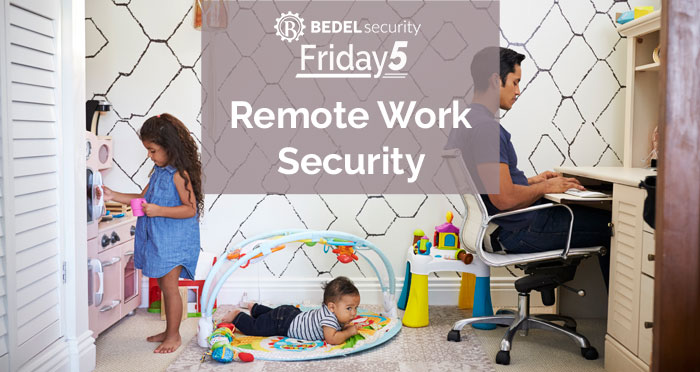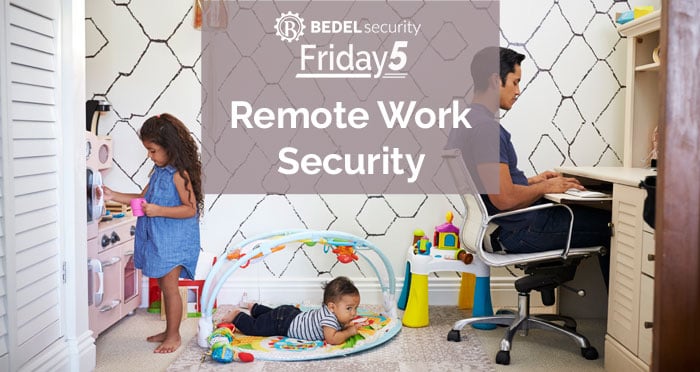Murphy’s Law and Business Continuity Plans
Any seasoned IT pro can recount stories where seemingly insignificant components or very rare events brought down critical systems. Perhaps it was...


In this age of quarantines and social distancing, many organizations are just beginning or expanding remote work capabilities. As always, along with whatever moves we make the hackers are not far behind or are already there. Here are five things you need to consider in making sure your remote work capabilities are healthy and ready to go.
If you need help with a risk assessment, policy or training your employees on remote work, we can help! Contact us at support@bedelsecurity.com or 833-297-7681.
Remote Access Risk Assessment
https://www.bedelsecurity.com/lp-remoteriskassessment
Remote Employee Access
https://www.bedelsecurity.com/blog/remote-employee-access

Any seasoned IT pro can recount stories where seemingly insignificant components or very rare events brought down critical systems. Perhaps it was...

In our line of work, we see many institution’s environments, cultures, and positions on the journey of their information security programs. One of...